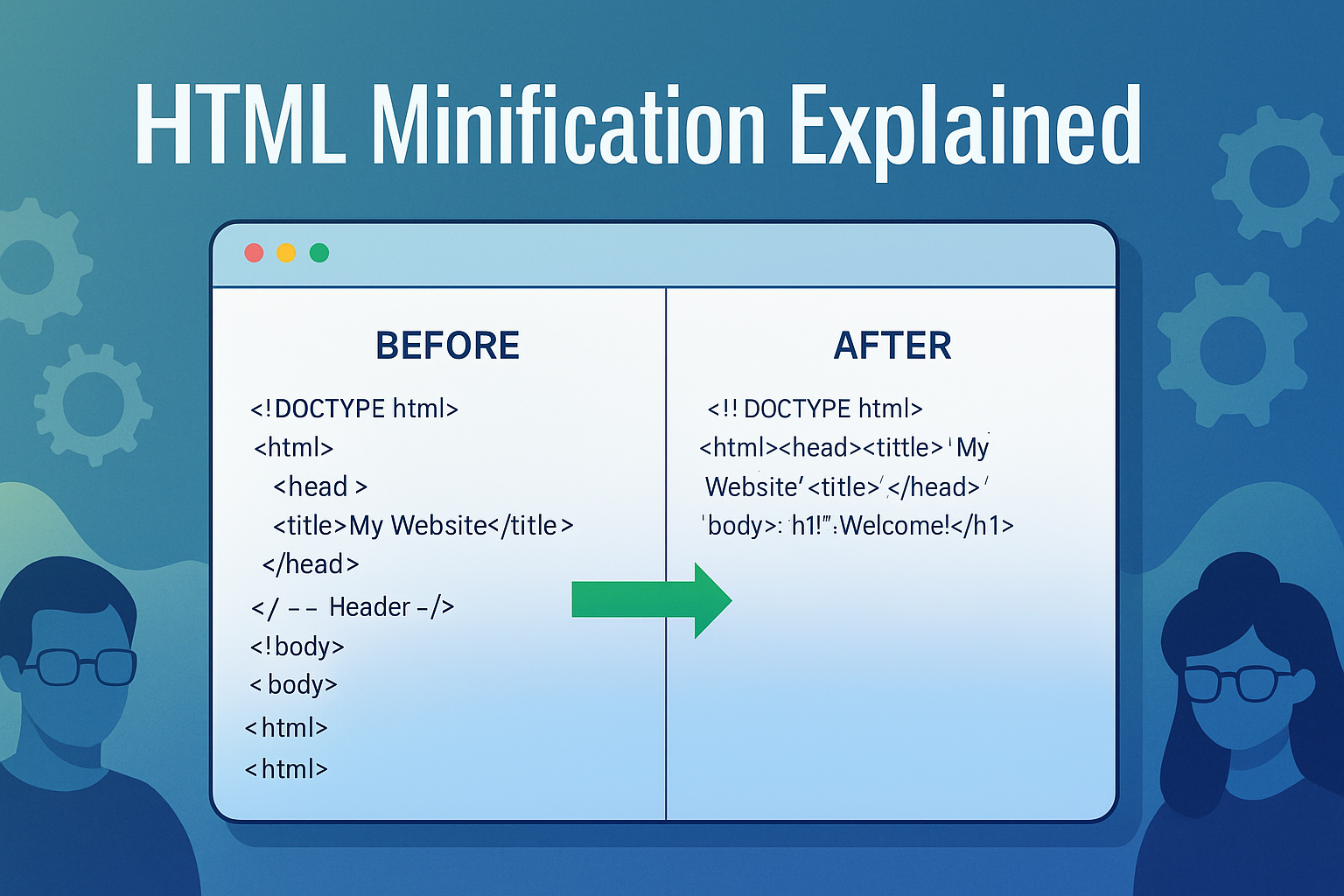
14
HTML Minifier Explained: How to Optimize Your Website Code for Speed (2025 Guide)
Want your website to load faster without changing how it looks? Learn how an HTML Minifier works, why it’s essential for SEO and performance, and how to use free online tools on recipeace.blog to compress and optimize your website’s HTML code.
Introduction: The Secret to Faster Websites in 2025
Website speed isn’t just a technical issue — it’s a ranking factor for SEO, a conversion booster, and a user experience enhancer.
In today’s digital landscape, even one extra second of load time can cause visitors to leave.
One of the easiest, most effective ways to speed up your website is by minifying HTML.
Let’s explore what HTML minification is, why it matters, and how to do it with free tools like the HTML Minifier on recipeace.blog.
What Is HTML Minification?
HTML minification is the process of removing unnecessary characters — such as spaces, comments, and line breaks — from your website’s HTML code without changing its functionality.
Example Before Minification:
<!DOCTYPE html>
<html>
<head>
<title>My Website</title>
</head>
<body>
<h1>Welcome!</h1>
</body>
</html>
After Minification:
<!DOCTYPE html><html><head><title>My Website</title></head><body><h1>Welcome!</h1></body></html>
Same result, smaller size, faster performance.
Why Minify HTML?
HTML minification benefits your site in multiple ways:
- Improves Load Speed — Smaller file sizes mean faster delivery from server to browser.
- Boosts SEO — Google prioritizes faster websites in search results.
- Reduces Bandwidth Usage — Optimized code saves data transfer costs.
- Enhances User Experience — Users stay longer on faster sites.
What Gets Removed During Minification
Removed ElementPurposeExtra spaces and tabs | Reduce file size
Line breaks | Compact the code
Comments (<!-- -->) | Remove unnecessary notes
Redundant attributes | Clean up unused code
Minification is like spring-cleaning your website — no more clutter!
Difference Between Minification and Compression
They sound similar, but they’re not the same:
AspectMinificationCompressionLevel | Code structure | File transmission
Example | Removes spaces | GZIP compresses
When applied | Before deployment | During delivery
Using both together ensures maximum speed optimization.
How to Use an HTML Minifier (Step-by-Step)
Step 1: Visit the Free Tool
Go to HTML Minifier on recipeace.blog
Step 2: Paste or Upload Your Code
Simply copy and paste your HTML or upload an .html file.
Step 3: Click “Minify HTML”
The tool instantly compresses your code without altering its structure.
Step 4: Download or Copy
Get your optimized HTML file ready for upload or integration.
Example of Minification in Action
Before:
<!-- Header --> <div class="header"> <h1>Recipeace Blog</h1> </div>
After:
<div class="header"><h1>Recipeace Blog</h1></div>
The difference is invisible to users — but dramatically improves speed.
Tools That Work Great Together
For a fully optimized workflow:
- HTML Minifier → compress structure
- CSS Minifier → optimize stylesheets
- JS Minifier → streamline JavaScript
- GZIP Compression Test → ensure your server compresses pages
All are free on recipeace.blog.
How HTML Minifiers Work
Under the hood, minifiers use parsing algorithms to:
- Identify text nodes and elements
- Strip out whitespace and comments
- Combine code elements into one line
- Validate the output for proper rendering
This ensures safe compression while maintaining complete functionality.
Is It Safe to Minify HTML?
Absolutely. Minification doesn’t modify your website’s actual behavior — only its formatting.
Safe for all browsers
Works with WordPress, Shopify, and static sites
Can be automated for CI/CD pipelines
Advanced Tips for Developers
- Use version control — Keep a formatted copy for editing.
- Combine CSS and JS minifiers — To maximize efficiency.
- Enable GZIP compression — To compress files further.
- Minify server-side — Automate using build tools like Webpack or Gulp.
SEO Impact of Minifying HTML
Search engines love fast websites.
By reducing load time, minification helps:
- Lower bounce rate
- Increase average time on page
- Improve Core Web Vitals metrics
Fast sites are also more likely to get featured snippets and higher CTRs.
Common Mistakes to Avoid
Minifying code that isn’t complete
Forgetting to back up original files
Minifying already minified code (double compression)
Always preview your minified version before deploying.
FAQs
Q: Will minifying HTML break my website?
A: No, if done correctly. Tools like recipeace.blog handle this safely.
Q: Can I unminify code later?
A: Yes, with a code beautifier or formatter.
Q: Should I minify HTML manually?
A: It’s possible but inefficient — use automated tools.
Conclusion
HTML minification is one of the easiest ways to boost your website’s performance and SEO.
It’s quick, safe, and entirely free using the HTML Minifier on recipeace.blog.
Try the free HTML Minifier Tool
today and make your site faster instantly!
Contact
Missing something?
Feel free to request missing tools or give some feedback using our contact form.
Contact Us